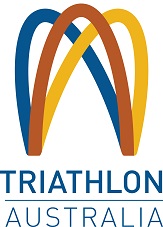Triathlon Australia CEO Miles Stewart was full of praise for the boost in funding that will benefit our emerging Olympic talent.
“Investment into this area is of significant benefit to further developing our talent identification programs and support services that will ultimately help deliver our next generation of Olympic athletes,” said Stewart.
Over $300m will be allocated over the next two years to physical activity and sport, with half spent on Sport Australia projects, including pathways for emerging athletes.
“We are extremely pleased to see a significant amount of the funding allocated to promoting participation in sport at all levels across community and inclusive projects. It is something that triathlon is passionate about, and through our programs offering opportunity for everyone to participate and get to a starting line.”
Media Release
Sport Australia Chair John Wylie has welcomed the Australian Government’s $385.4 million package for sport and physical activity announced in last night’s Federal Budget, declaring it as one of the biggest funding injections for sport in years.
The Federal Budget delivered more than $158 million of new investment directly to Sport Australia and the AIS, helping to fund community participation initiatives through to additional support for Australia’s high performance athletes. An additional $54.1 million will be invested in high performance sport for athlete pathways and wellbeing, while school and community infrastructure programs will be expanded.
“This funding creates incredible opportunity for sport, from children learning to play and be active through to talented athletes representing and inspiring the nation,” Wylie said. “It is one of the biggest funding injections in Australian sport in years.”
Wylie said the extension of the national Sporting Schools program was an important feature of participation funding. Sporting Schools, which has reached 85 per cent of schools in its first four years, received a further $40 million in funding to extend the program until the end of 2020.
“Sporting Schools can be a vital catalyst for improving the health of young Australians.” Wylie said. “We want to give every Australian child the opportunity to grow up happier and healthier through a connection with Sporting Schools.
“Since its launch in 2015, more than 7,100 schools have been funded by the Sporting Schools program and there have been almost 4.8 million attendances in Sporting Schools activities.
“Sport and physical activity is vital to the overall development of children, including their mental wellbeing. The beauty of Sporting Schools is that it’s free, so the opportunity is there for every school child, no matter their location, background, ability or socio-economic status.
“Creating healthier habits in our children will take time, but it’s unquestionably worth the effort because we know active kids are far more likely to become active adults. One positive connection with Sporting Schools could help make a lifetime of difference.”
Sport Australia’s AusPlay research shows 81 per cent of Australian children are not meeting recommended physical guidelines. To combat this, Sporting Schools partners with 33 national sports to provide free and fun sporting opportunities for children before, during and after school.
Sport Australia CEO Kate Palmer says: “We welcome the Australian Government’s investment and confidence that Sporting Schools can help drive behavioural change in our children, enabling them to reap the enormous benefits sport and physical activity can provide.”
Another key investment in last night’s Federal Budget was an extra $42.5 million for the Move It AUS Community Sport Infrastructure Grant Program. The program was launched this financial year and has already provided more than $60 million for more than 450 projects around the country to upgrade community sporting facilities.
“In delivering on the national sport plan, Sport 2030, Sport Australia’s vision is for Australia to become the world’s most active sporting nation and access to active spaces is critical to get more Australians moving,” Palmer says.
“Building better sporting facilities is about building stronger, healthier communities by promoting physical activity, social connection, civic pride and economic vitality.”


Follow us on:


